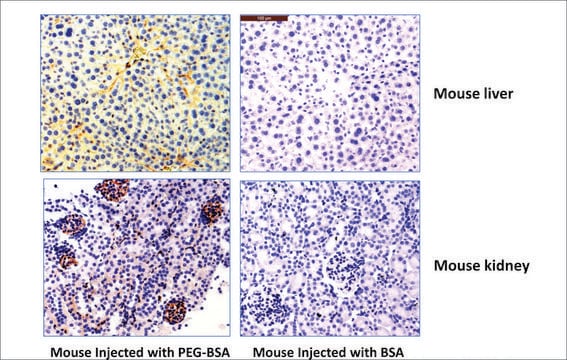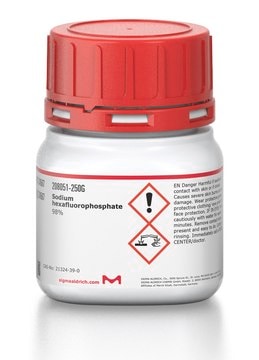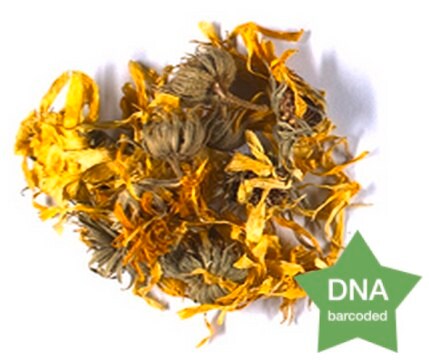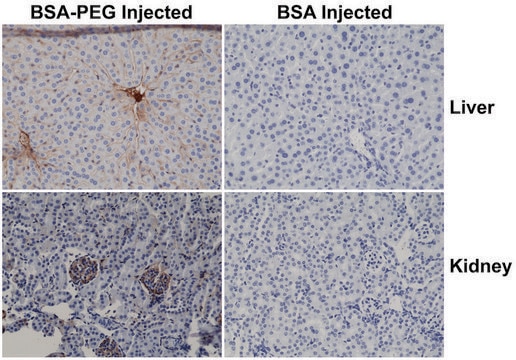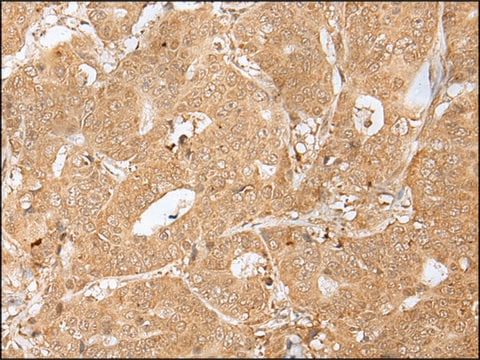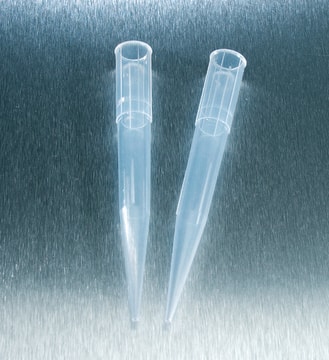MABS1214
Anti-PEG (methoxy group) Antibody, clone RM105
clone RM105, from rabbit, purified by affinity chromatography
Synonym(s):
PEG, pegylation, methoxy group, Polyethylene glycol, polyethylene oxide, PEO, polyoxyethylene, POE
About This Item
Recommended Products
biological source
rabbit
Quality Level
antibody form
purified immunoglobulin
antibody product type
primary antibodies
clone
RM105, monoclonal
purified by
affinity chromatography
species reactivity (predicted by homology)
all
technique(s)
ELISA: suitable
immunohistochemistry: suitable
western blot: suitable
isotype
IgG
shipped in
wet ice
target post-translational modification
unmodified
General description
Immunogen
Application
ELISA Analysis: Multiple concentrations of this antibody was used to detect three different BSA-PEG conjugates (5K, 40K and 40K branched)
Signaling
Epitope Tags
Quality
Western Blotting Analysis: A 1:1;000 dilution of this antibody detected PEG (methoxy group) on conjugated recombinant BSA
Target description
Physical form
Storage and Stability
Other Notes
Disclaimer
Not finding the right product?
Try our Product Selector Tool.
Storage Class Code
12 - Non Combustible Liquids
WGK
WGK 2
Flash Point(F)
Not applicable
Flash Point(C)
Not applicable
Certificates of Analysis (COA)
Search for Certificates of Analysis (COA) by entering the products Lot/Batch Number. Lot and Batch Numbers can be found on a product’s label following the words ‘Lot’ or ‘Batch’.
Already Own This Product?
Find documentation for the products that you have recently purchased in the Document Library.
Our team of scientists has experience in all areas of research including Life Science, Material Science, Chemical Synthesis, Chromatography, Analytical and many others.
Contact Technical Service